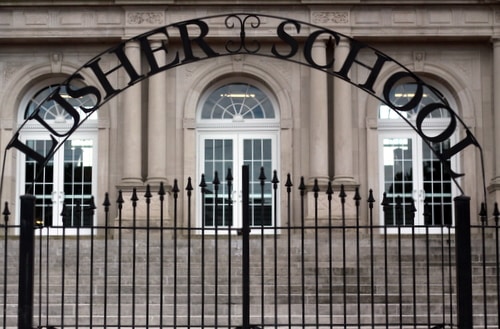As protesters nationwide storm the symbols of the Confederacy and institutional racism, a movement to rename the revered Lusher Charter School has received a renewed boost.
This time, however, the administration has said it will consider the idea of removing the name of staunch segregationist Robert Mills Lusher.
A petition on Change.org garnered more than 2,600 signatures by Wednesday evening. Commentary on the petition describes the racist legacy of the school’s namesake, who advocated using public education to promote white supremacy while serving as the state’s superintendent of education after the Civil War.
The petition does not suggest an alternative name for Lusher, a K-12 charter that consistently ranks among the city’s highest performing, other than opting for one that “honors the diverse experiences, hopes and dreams of the children who they purport to care for and educate every day.”
Lusher’s board of directors has not formally taken up a proposal to change the school’s name, according to board president Richard Cortizas.
It’s not the first time the issue has come up. Activists in the early 1990s pressed the Orleans Parish School Board to rename schools that honored slave owners and Confederate officials. The notion of changing Lusher’s name again attracted citywide attention before Hurricane Katrina, amid controversy that arose as Lusher sought to expand to a high school.
In the aftermath of the 2015 Charleston church killings that led to Mitch Landrieu’s effort to remove major Confederate memorials from public view, Lusher was mentioned again. As the city was beginning to remove monuments to Robert E. Lee, Jefferson Davis and other symbols of the Confederacy in 2017, Robert Mills Lusher’s history as an avowed segregationist resurfaced. Lusher students then circulated a petition to rename the school, which had about 45 supporters.
The Willow Street elementary school was named for Robert Mills Lusher at its founding in 1913, an active period for the Lost Cause movement responsible for installing Confederate monuments throughout the South. The Lost Cause promoted a white-supremacist narrative of the Confederacy as heroic.
The name remains etched in stone on the building, although the school dropped the “Robert Mills” decades ago.
An outline of Lusher’s life by writer Michael Tisserand — who kept coming across references to Lusher, the namesake of his children’s school, while researching a book on Creole cartoonist George Herriman — is riddled with Lusher’s official statements denigrating the former slave population and promoting school segregation.
He became the state’s top education official after a career in the Confederate government, and he used the post to promote his belief in “the supremacy of the Caucasian race.”
For more than three decades, Lusher fought in word and deed for the idea that the purpose of the public schools was to ensure that white students remained in a better social position than black students. In his autobiography, Lusher noted that he had urged the state’s small-town governments to support the “thorough education of white children, in rural Louisiana, so that they would be properly prepared to maintain the Supremacy of the white race in rural Louisiana.”
Lusher Charter School educates about 1,800 students on its two Uptown campuses. The selective-admissions school’s stated mission includes “the celebration of individuality and diversity enable each child to achieve as a learner, a person, and a valuable member of our society.”
More than half of Lusher’s students are white, while less than a third are black, according to a U.S. News and World Report analysis of government data. About 16% are economically disadvantaged.
After signing the Change.org petition, Lusher student Trinity Payton commented online: “I know for a fact it’s hard sitting in a class and as soon as you bring up the word ‘slave(s)’ people in the class look at you like you know what it’s like to be one. We learn about the holocaust every year, but when we bring up slavery and how the black community is being mistreated it quickly gets put to the side like it doesn’t matter or like we should get over it.”
Former teacher Brad Richard noted online that “Lusher’s values are not those of Robert Mills Lusher, and removing the ‘Robert Mills’ part doesn’t change that contradiction.” Richard urged the school’s administration and board to find a name “we can all celebrate.”
Several commenters had a suggestion for the name: Sylvia Branch. In 1961 — a year after Ruby Bridges and others famously integrated New Orleans’ public schools — 6-year-old Sylvia and her friend Toni Robinson walked past an angry mob to become the first black children to attend Robert Mills Lusher School.
Sylvia Branch’s mother, Phyllis Nuchurch, described the young girls’ ordeal in a 2003 interview with the Durham Civil Rights Heritage Project, archived in the Durham, North Carolina, public library. “They were out there. I mean, on both sides of the streets,” Nuchurch said. “It was the ugliest mob you have ever seen.”
It was a different scene altogether inside the school, Nuchurch said. “The teachers inside were very warm, they were very welcoming,” she told the interviewer. “… And they made it a really pleasant experience. So the problem was not going into the school. The problem was getting to the school without incident.”
